SEO
Free SEO Analysis
SEO Services
Content Marketing Services
Local SEO
Link Building Services
Specialized SEO Services
PPC
REPUTATION MANAGEMENT
Free Reputation Management Analysis
Reputation Management Services
Review Management Services
Specialized Reputation Management Services
CEO Reputation Management
Brand Enhancement
Business and Directory Listings
Comprehensive Reputation Management Audit
SOCIAL MEDIA
Free Social Media Analysis
Specialized Social Services
WEB DEVELOPMENT
Free Website Analysis
Web Design Services
Mobile Development Services
Website Maintenance Services
Specialized Development Services
MARKETING AUTOMATION
Free Marketing Automation Analysis
Specialized Marketing Automation Services
Comprehensive Marketing Automation
INDUSTRIES
ABOUT DMA
Digital Marketing
Digital Marketing News 05/24/2022 – 05/30/2022
Request a quote
Its Fast, Easy & Free
Executive Summary
This week on the latest digital marketing updates: Twitter creates a new policy to prevent misinformation during times of crises, TikTok encourages a culture of credit with its new creator crediting feature, YouTube Studio revamps their analytics by providing individual performance insights for different content types, TikTok takes the first step to minimize agency involvement with its new content crowdsourcing feature, and Google Ads introduces three new changes to their audience features.
Here are the latest news, trends, and updates in detail:
Twitter Introduces Its Crisis Misinformation Policy
In an effort to limit the spread of harmful misinformation via its platform, Twitter created a new policy that will restrict the amplification of false or inaccurate information in times of crisis.
Twitter’s crisis misinformation policy is a global policy that will guide the platform’s efforts to elevate credible, authoritative information. It also helps ensure that they don’t amplify or recommend viral misinformation during crises.
Twitter defines crises as “situations in which there is a widespread threat to life, physical safety, health, or basic subsistence.” Eventually, the social media platform will expand its approach to enforce around other emergent global crises.
To determine whether claims are misleading, Twitter requires verification from multiple credible, publicly available sources, including evidence from conflict monitoring groups, humanitarian organizations, open-source investigators, journalists, and more.
Twitter also recognizes that conversation moves quickly during periods of crisis. So to reduce potential harm, as soon as they have evidence that a claim may be misleading, they won’t amplify or recommend it in the Home timeline, Search, and Explore — as long as the content is covered by their policy.
Users may come across warning notices on Tweets that promote the following:
False coverage or event reporting, or information that mischaracterizes conditions on the ground as a conflict evolves;
False allegations regarding use of force, incursions on territorial sovereignty, or around the use of weapons;
Demonstrably false or misleading allegations of war crimes or mass atrocities against specific populations;
False information regarding international community response, sanctions, defensive actions, or humanitarian operations.
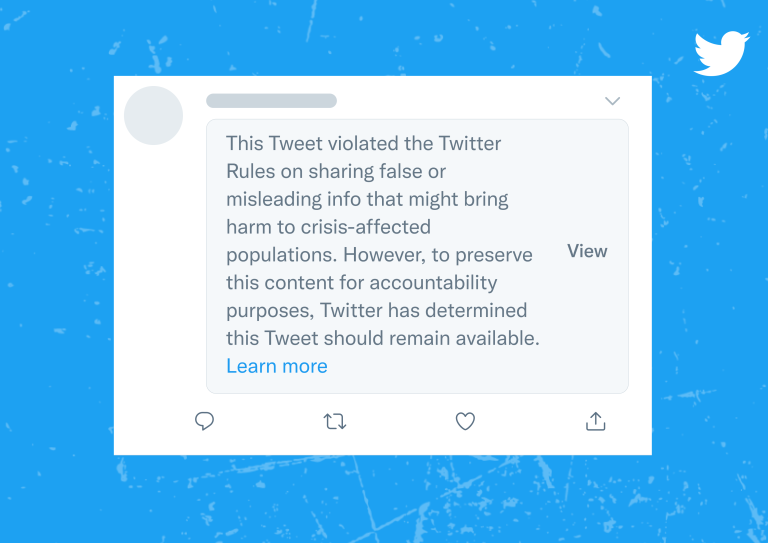
Users will be required to click through the warning notice to view the Tweet, and the content won’t be amplified or recommended across the platform. Likes, Retweets, and Shares will also be disabled for Tweets with content that violate the crisis misinformation policy.
TikTok Launches New Feature to Credit Creators
With this new feature, TikTok users will be able to directly tag and credit video creators and trend originators.
TikTok’s new crediting tools allow creators to directly tag, mention, and credit a video in their description. These features are an important step in the social media platform’s ongoing commitment to support a culture of credit by encouraging its users to cite original creators.
TikTok also adds more prompts for users to give credit throughout the posting process, along with an educational pop-up that encourages and explains the importance of crediting. These new features will be rolling out to more users over the next few weeks.
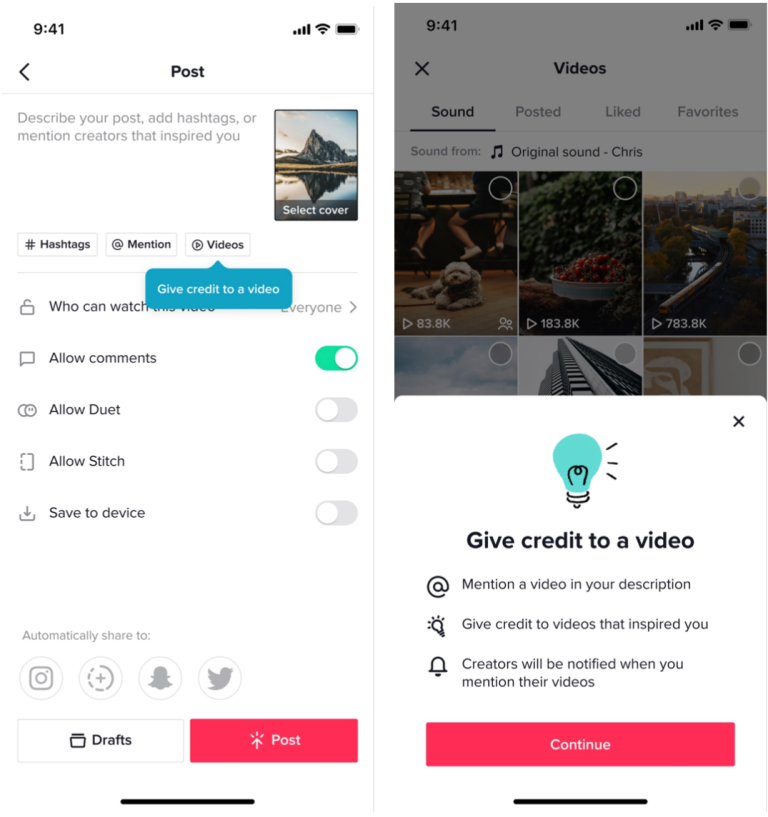
To use TikTok’s new creator crediting tools, follow these steps:
Create or edit a TikTok video.
On the posting page, tap the new “video” icon.
Once on the video tag page, you can select a video that you have liked, favorited, posted, or that has used the same sound.
Once selected, the video tag will be added as a mention in the caption.
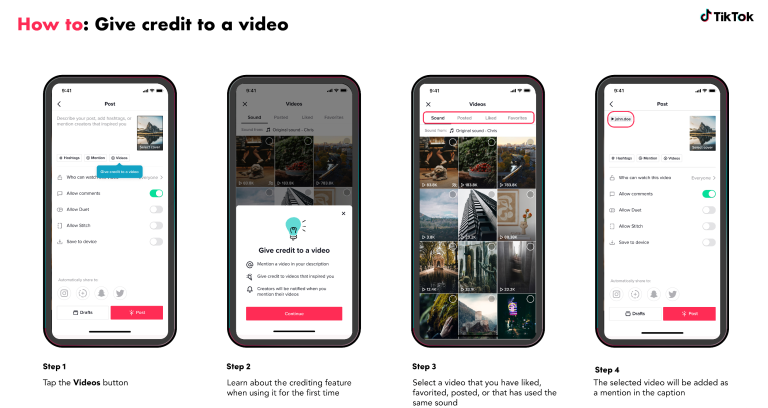
YouTube Studio Improves Its Analytics with A Breakdown of Each Content Type
YouTube provides more insight on the individual performance of videos, Shorts, live streams, and posts with its revamped analytics options.
In a video announcement, the YouTube Analytics team revealed that the Reach and Engagement tabs in YouTube Studio will soon be replaced by a new Content tab, which will house the performance insights for videos, Shorts, live streams, and posts.
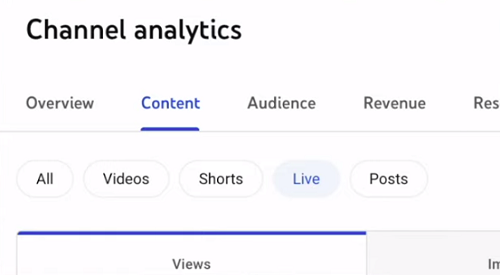
Tapping into any of these sections will show creators dedicated data for each, making it easier to track the performance of various content types. This update has been a top-requested feature at YouTube, particularly since the arrival of Shorts.
Creators will still be able to view aggregate content performance on the All tab.
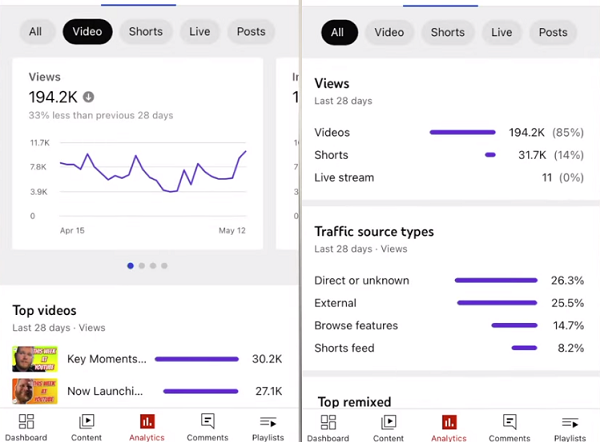
YouTube reiterated that all the previously available metrics will remain accessible in this new format, though they may be moved around. For example, Traffic Sources, which was found in the Reach tab, is now listed in each individual content type display.
To access advanced analytics, simply switch to “Advanced Mode.” For the desktop version, this button is found in the top-right corner. In the Advanced Mode, creators can filter metrics by content type and find more detailed data for each.
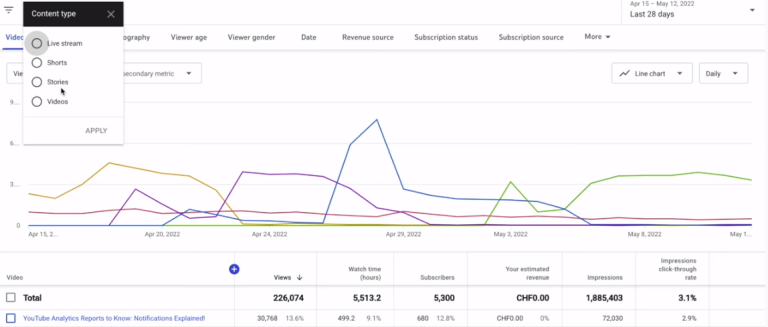
It’s also important to note that the content tabs will only appear if the creator has uploaded that type of video. For instance, if the user has never hosted a live stream on YouTube, they won’t see a Live tab, and the same applies to the other content types.
The updated YouTube Studio Content tab is rolling out over the next few weeks for all creators on desktop, Android, and iOS.
TikTok Opens “Branded Mission,” A New Way to Crowdsource Creative Content
Through Branded Mission, brands can now source content directly from TikTok creators without going through a third-party agency.
Branded Mission offers an innovative way for brands to crowdsource authentic and creative content from the TikTok community. It also empowers creators to engage directly with brands to create and monetize their content for marketing campaigns.
It’s worth noting that this initiative veers away from the current practice of going through agencies that offer influencer marketing services.
Here’s how Branded Mission works:
1. Set up your Mission. You can choose from several pre-selected qualifiers.
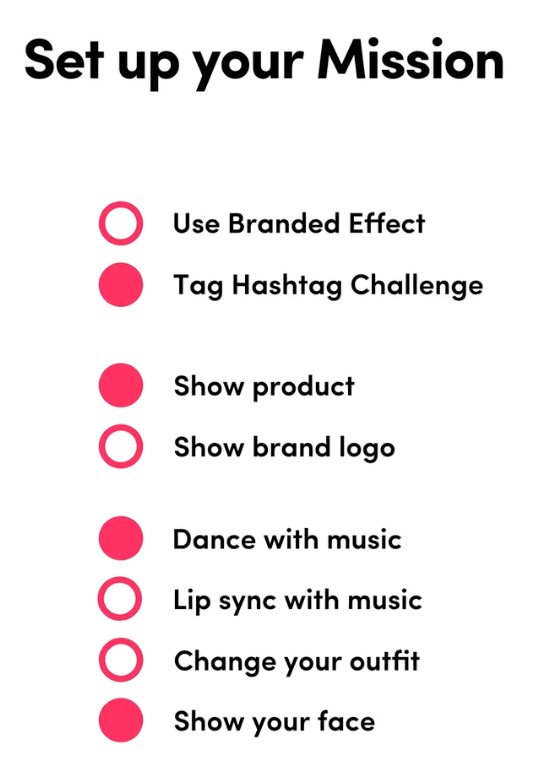
2. Once your mission is set live, eligible creators are notified and they can submit up to three videos.
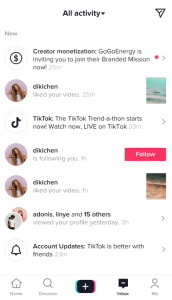
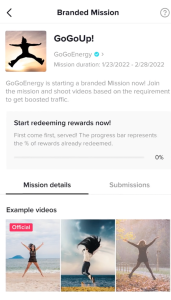
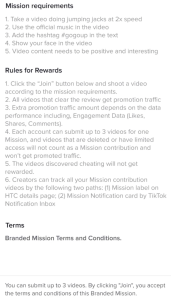
3.TikTok’s algorithm will recommend top-performing, brand-safe videos that are boosted as sponsored ads, driving community engagement and increasing brand visibility. Creators will be rewarded with cash incentives and content traffic.
Google Ads Updates Its Audience Features
Google Ads rolls out minor changes to its audience targeting and reporting features and shares the update to advertisers via email.
Some advertisers may have already experienced the rollout of three changes coming to Google Ads:
New Audience Reporting Google has launched a simplified view of the audience reporting, consolidating detailed reporting under a single Audiences tab within the left-page navigation menu. They also reassure advertisers that “all the same reporting features are still available.”
New Terms Google Ads is renaming key terms in the audience report and throughout the platform. Here’s a full list of the name changes:
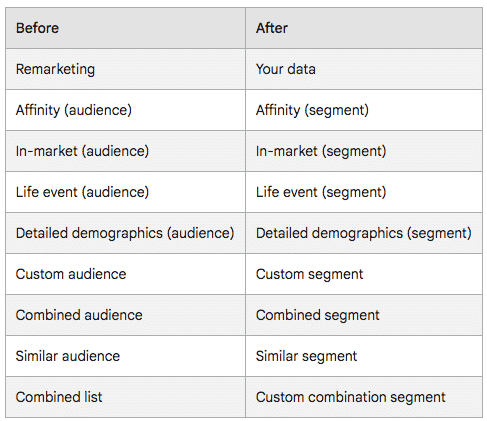
Reuse Audiences Advertisers can opt to reuse audiences across campaigns as Google Ads now has the capability to save a built audience. According to Google’s ads product liaison, this feature will be expanding to more campaign types in the coming months.
The Google Ads email update was shared on Twitter by user @PPCGreg:
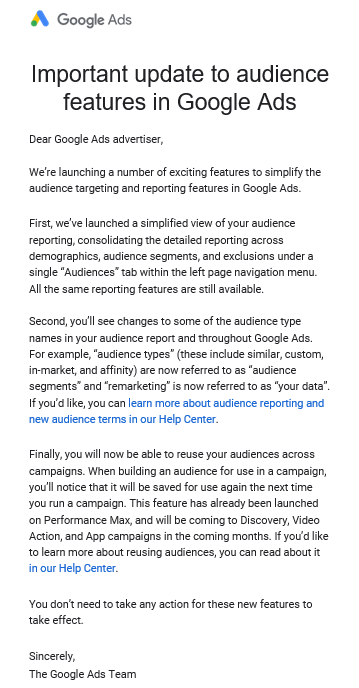
What you can do next
Always review your content before publishing and make sure that it doesn’t violate community standards and policies.
Support the culture of credit by recognizing original content creators when you utilize user-generated content (UGC).
Look deeper into performance insights to improve your content and targeting across all channels.
It pays to be an early adopter. When new trends or features come out, evaluate the opportunities they present for your brand, familiarize yourself with the changes, and take the plunge.
Elevate Your Marketing
Gen Z: Marketing to Reach the New Generation Gen Z marketing is easier than you think. Check out these useful tips on connecting with Gen Z, a young, hip market with spending power and a deep love for all things social media. Read more >
12 Common Facebook Ad Mistakes (And How to Avoid Them) Facebook can be an effective advertising tool when you use it the right way. Learn the most common Facebook advertising mistakes marketers make and what you can do to avoid or fix them. Read more >
Our Sales team